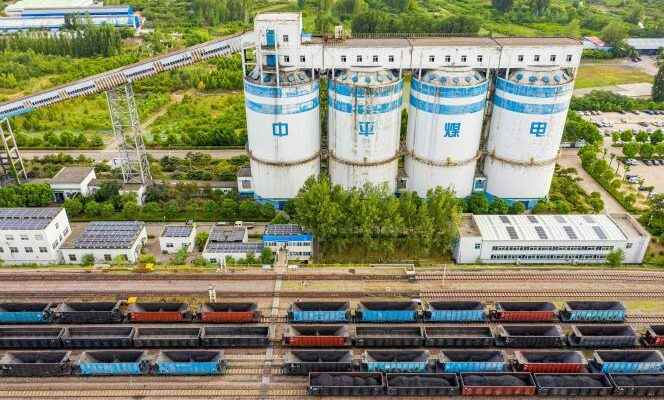It’s a real vicious circle: to compensate for the energy shortage caused by a historic drought and scorching temperatures due to global warming, China is giving pride of place to coal, which is recognized as one of the main causes of the said warming. .
Since mid-June, the Yangtze, which rises on the Tibetan plateau and flows into the sea towards Shanghai after a course of more than 6,300 kilometers, has had an exceptionally low flow. As a result, the provinces it crosses, particularly Sichuan, can no longer use its waters to produce electricity, while the extreme heat makes air conditioning essential and leads to peaks in electricity consumption. To compensate for the difference and reduce power cuts, the authorities are running coal-fired power plants as much as possible.
The National Energy Administration acknowledged this on August 24. Now, his “main mission” is D’“ensure the supply of more coal”authorizing the opening of new mines and ensuring the “import stability”. While in July, the country produced 12 million tons of coal every day – against 10 million a year earlier – this administration wants to reach 12.5 million. In the first seven months of the year, coal production reached 2.56 billion tonnes, 11.5% more than in the same period of 2021. As for imports, they jumped 24% in July (at 23.5 million tons) compared to the previous month.
Energy mix
Professionals are celebrating. In Guangxi, the international coal fair held in the fall in Yulin must push the walls. In 2021, 60,000 square meters hosted around 500 exhibitors. But this year, given the high number of requests, 100,000 square meters are planned, say the organizers.
Coal occupies an important place in the Chinese energy mix. 56% of the electricity produced in the country comes from it, far ahead of oil (20%), gas (8%), hydroelectricity (7%), renewables (5%) and nuclear (2%) . The share of coal is decreasing in relative value, but given that electricity consumption is increasing, it is progressing in absolute value.
“Beijing’s plan is to make coal an auxiliary resource”, analyzes Wu Jinghan of Greenpeace
Nevertheless, China having undertaken, through the voice of President Xi Jinping, to reduce its emissions of CO2 “before 2030” and achieve carbon neutrality “before 2060”, coal seemed less and less in court in Beijing. “We will strictly limit the increase in coal consumption during the 14e five-year plan (2021-2025) and reduce it during the 15e plan (2026-2030) », said Xi Jinping, in April 2021, during a summit organized by the American president, Joe Biden, on the climate.
You have 40.24% of this article left to read. The following is for subscribers only.
